SUMMER EVENING ON THE MEADOW
I'm often walking across the dusty roads and dried out meadows during the summer, especially in the evening. The atmosphere is slightly refreshing at the end of the day, many interesting species can be seen, and if you have a good flash - they can be photographed.
Some small animals are quiet, ready for the nighttime rest, while others are just getting active.
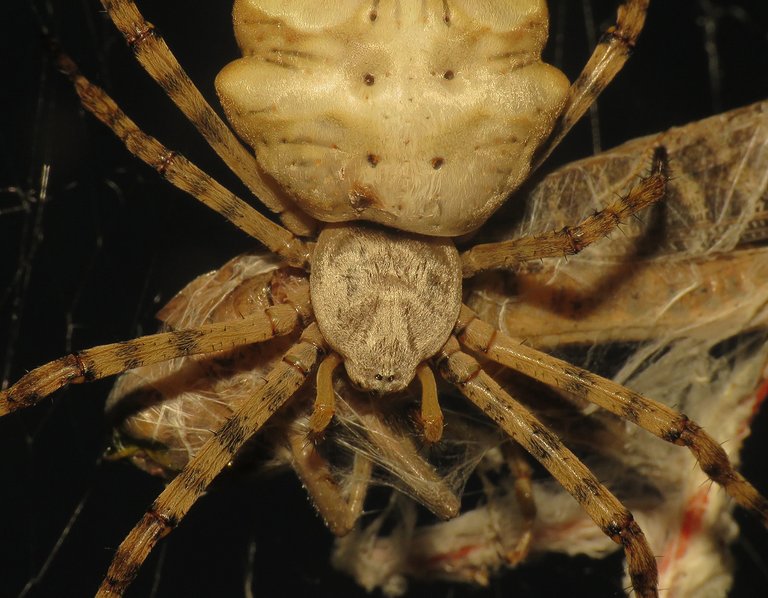
On this particular evening, some weeks ago ...
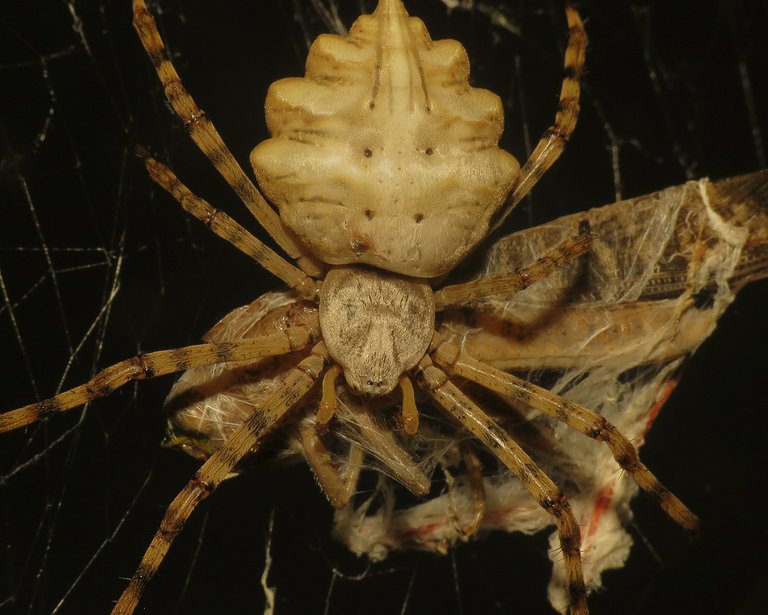
... I photographed a big spider that has caught a grasshopper in its web. The grasshopper was also pretty big. Probably the Locusta migratoria, commonly known as the Migratory locust. A rare case where the scientific and the common name sound very similar.
The spider is Argiope lobata, an interesting species related to the very common Wasp spider (Argiope bruennichi). While the Argiope bruennichi can be seen throughout all Europe and in North Africa, in big numbers and in all kind of habitats, the Argiope lobata is present in the whole Africa and only in the southern parts of Europe along the Mediterranean Sea. In my area, it's a relatively rare encounter. I see this species only on dry open meadows and in stony places covered with thorny shrubs, always near to the sea. On these opening photographs, you can see the female ...
... on her large cobweb.
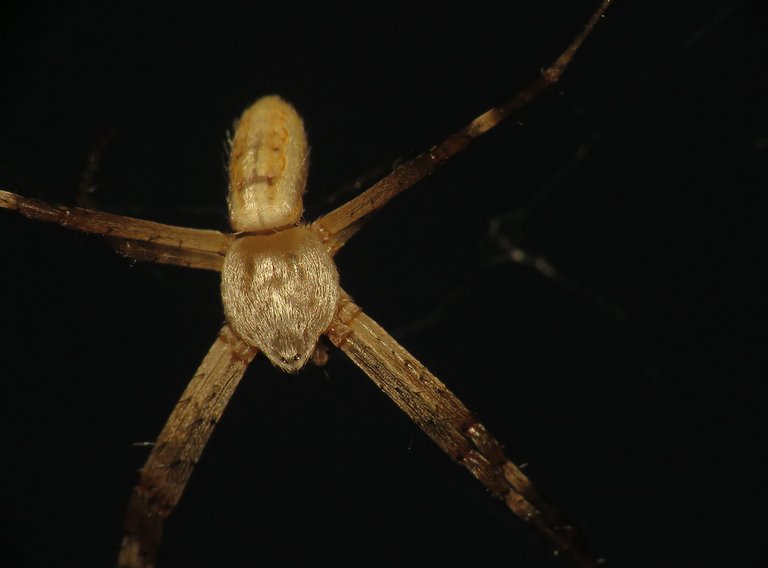
The small male was hanging at the edge of the web, in the upper right corner, probably waiting for the good opportunity to mate. Like in case of many spider species, mating for these small males, it's a very risky affair. There is a big probability that the large female will eat him before or after the copulation.
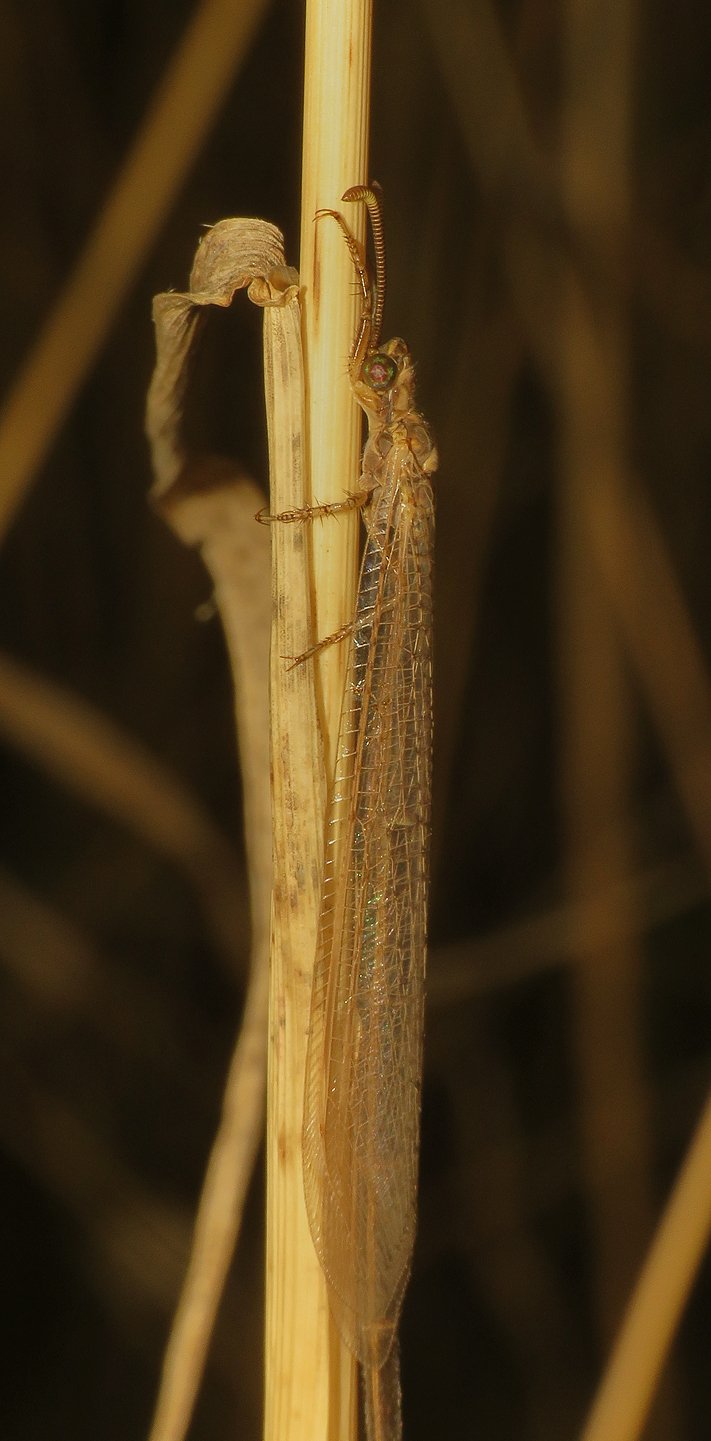
Most creatures are well camouflaged, very hard to spot unless they move. The ant - lion (Myrmeleon formicarius) gets merged with the stem of grass.
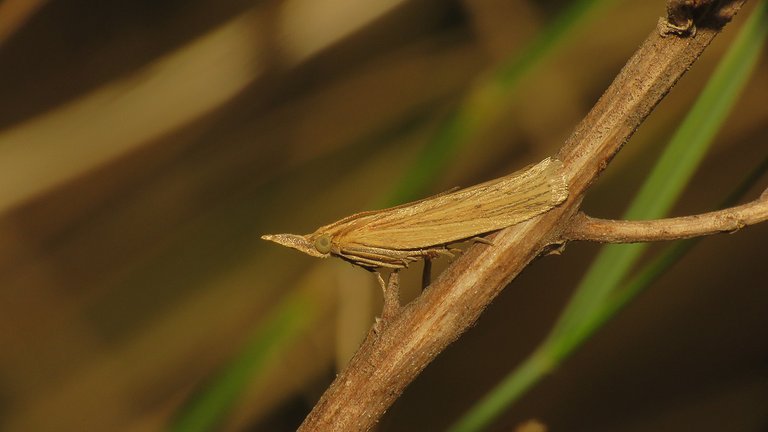
Many small moths look like dried out parts of vegetation. Like thorns, small leaves or fragments of seed pods.

This is the Ematheudes punctella, a moth from the Pyralidae family.
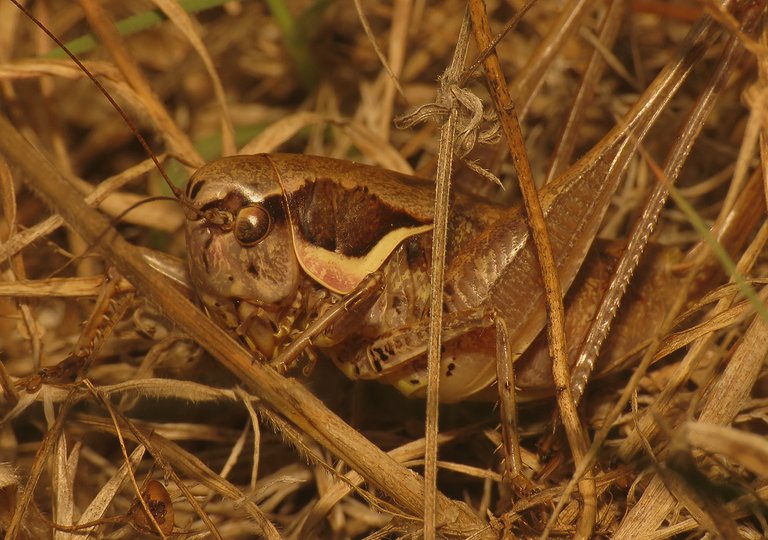
Some crickets are practically invisible in this environment before they jump.
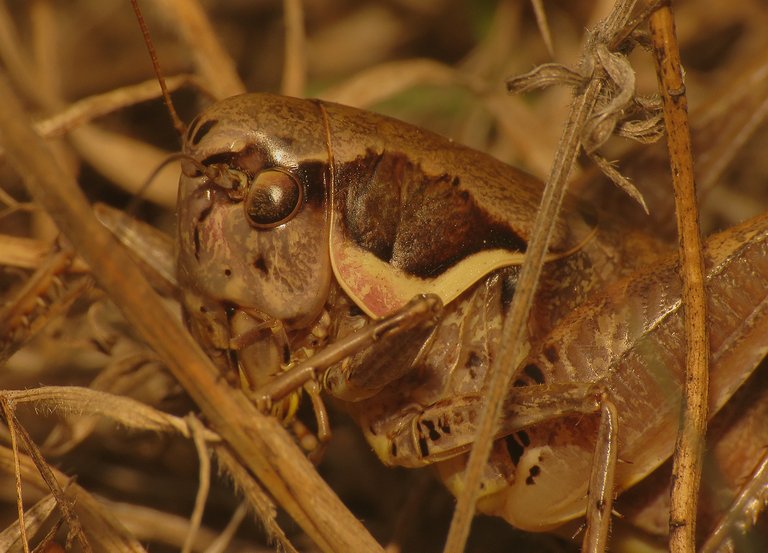
Here you can see the Pachytrachis gracilis bush - cricket.
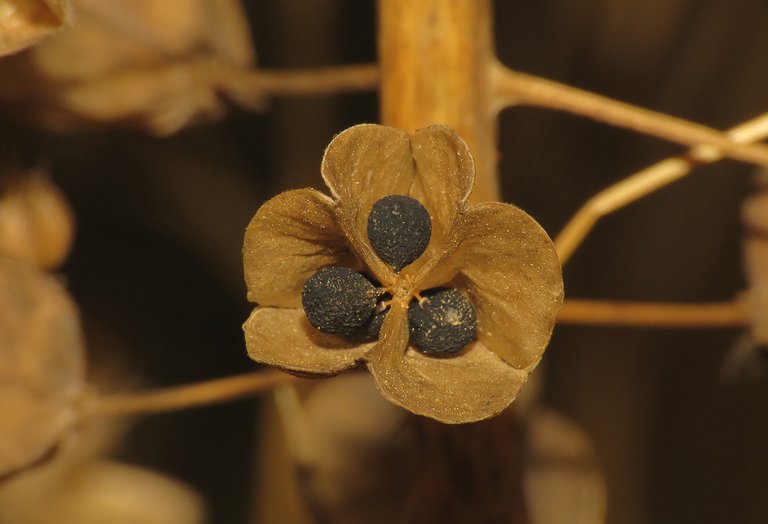
After these insects and the impressive Argiope spider, my attention got caught by a plant, for a change ...
... the dried out Muscari comosum ...
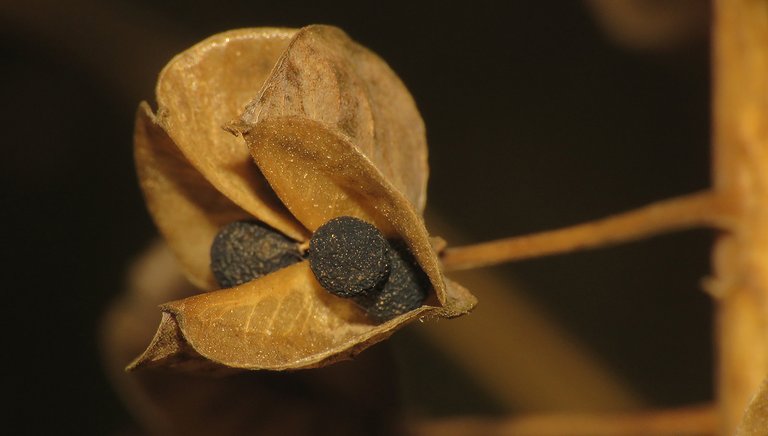
... with plenty of small black seeds ...
... inside these lovely, flower - like seed pods.
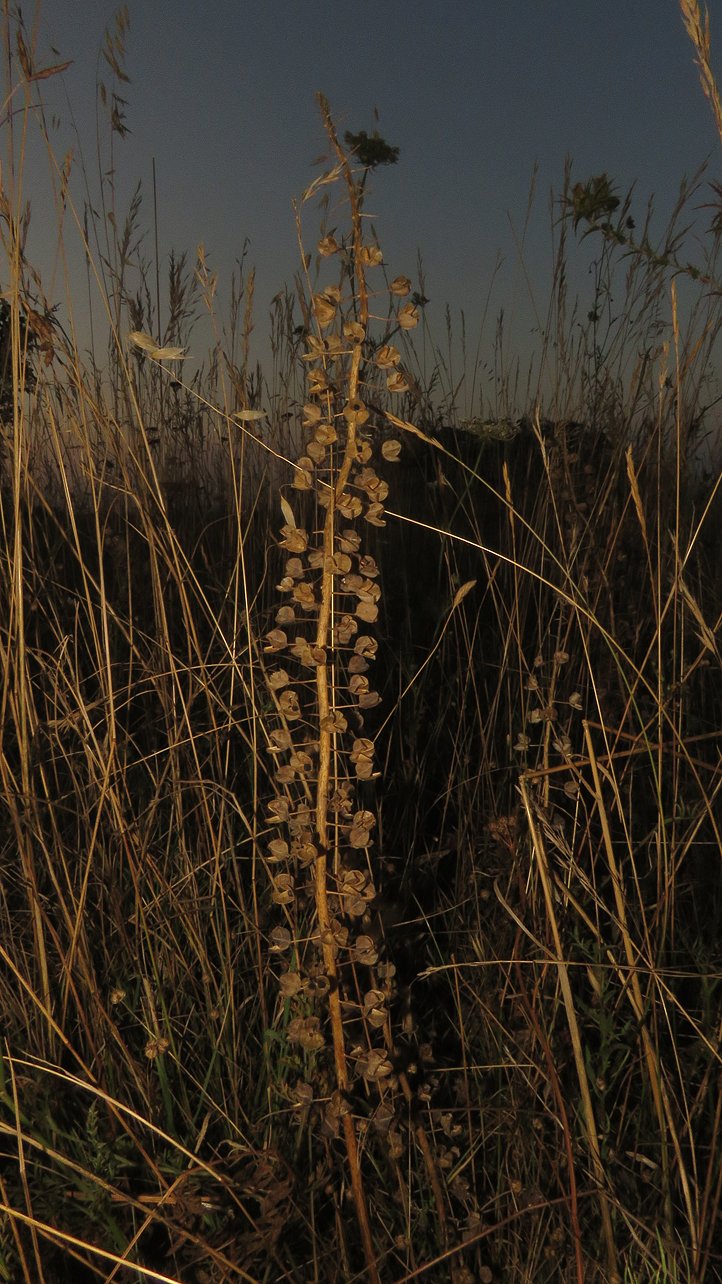
All stages in life of this plant look pretty cool.
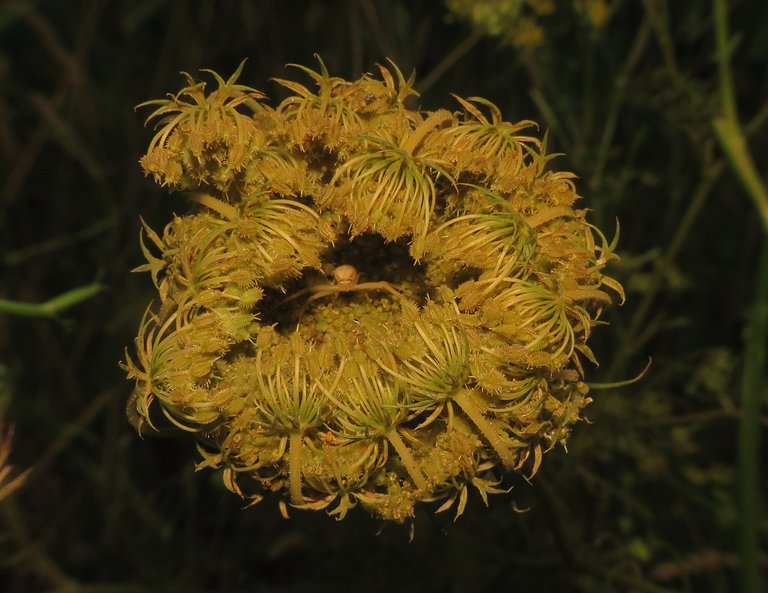
The large composite flowers of the wild carrot (Daucus carota), after the blooming phase, turn into these basket - like structures ...
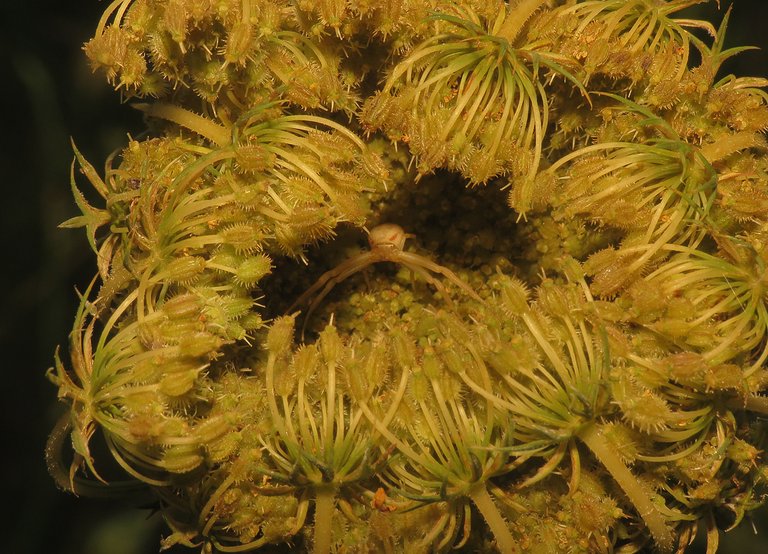
... that are used as hiding places and shelters by many small arthropods.
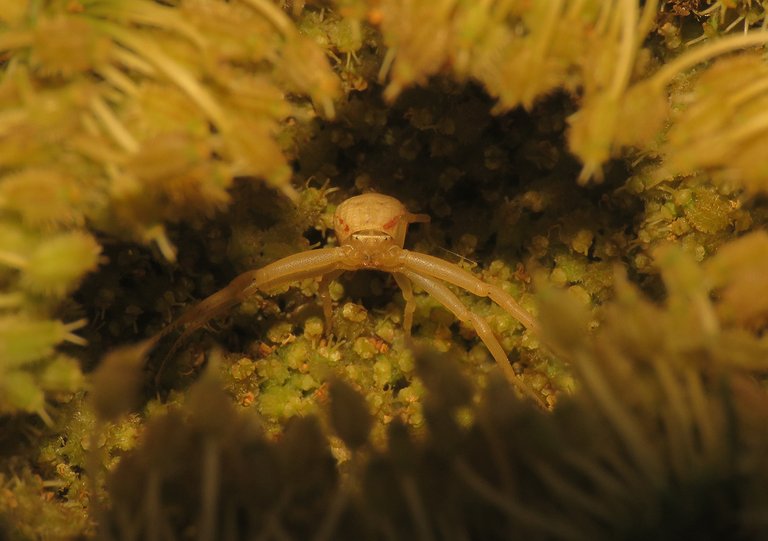
Here you can see a crab spider ...
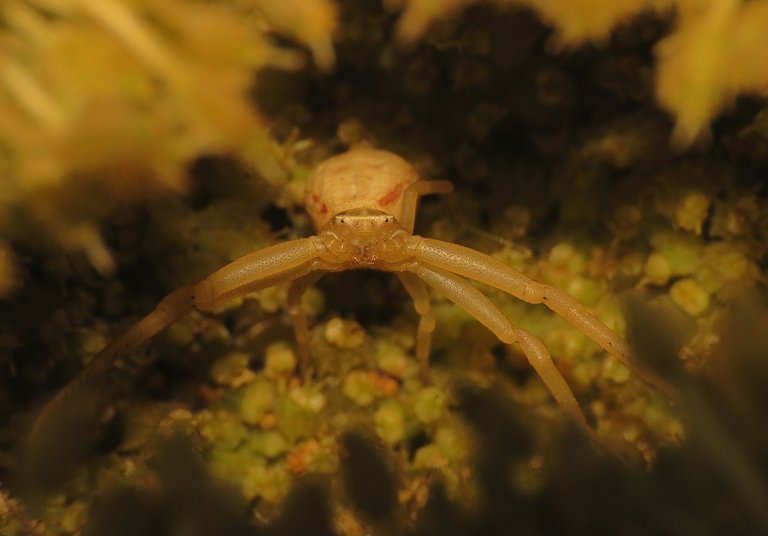
... the small juvenile male. Runcinia grammica is the name of the species.

Quite a few click beetle species are active at dusk and during the nighttime.
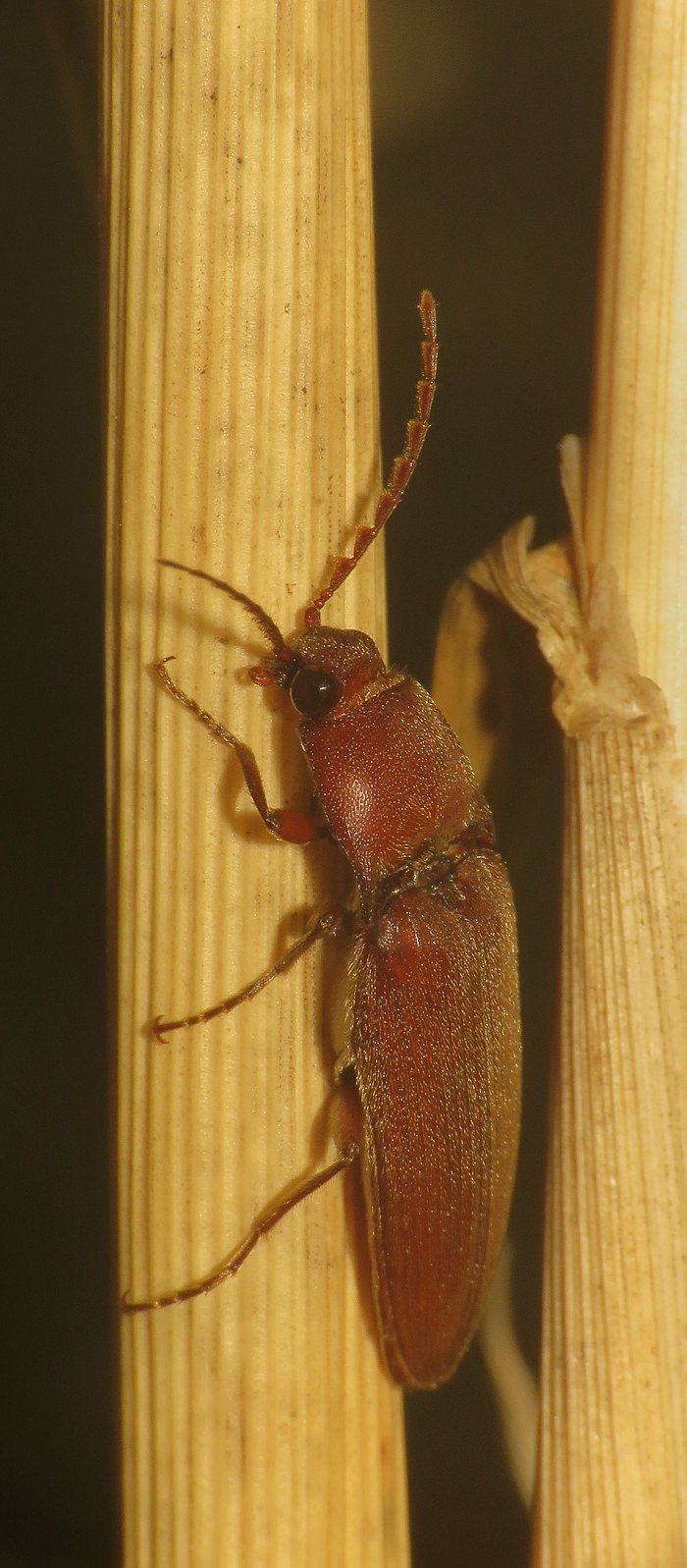
This is the Synaptus filiformis click beetle.
After this beetle ...
... I encountered an interesting, and slightly bizarre - looking planthopper nymph. This is the young, wingless version of the Metcalfa pruinosa, a species native to North America, but common and widespread throughout Southern Europe since the late seventies when it was accidentally introduced, first in Italy and then, in a few decades, reached the Black Sea coast.
On the nearby grass, the female of the Oxyopes heterophthalmus was guarding her cocoon ...
... and this wild, solitary bee, I don't know the exact species, has bitten the straw. This is a typical sleeping pose for many wild bee species on the meadows of this seaside area.
As always in these posts on HIVE, the photographs are my work - THE END.
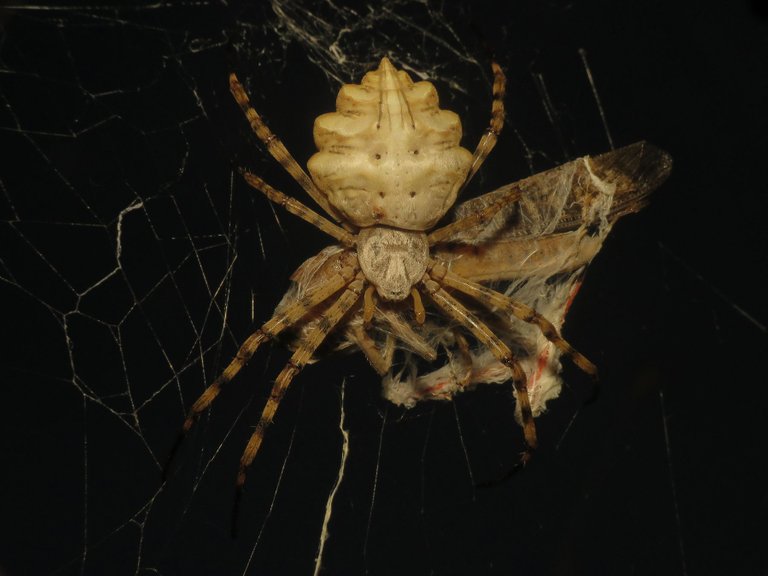
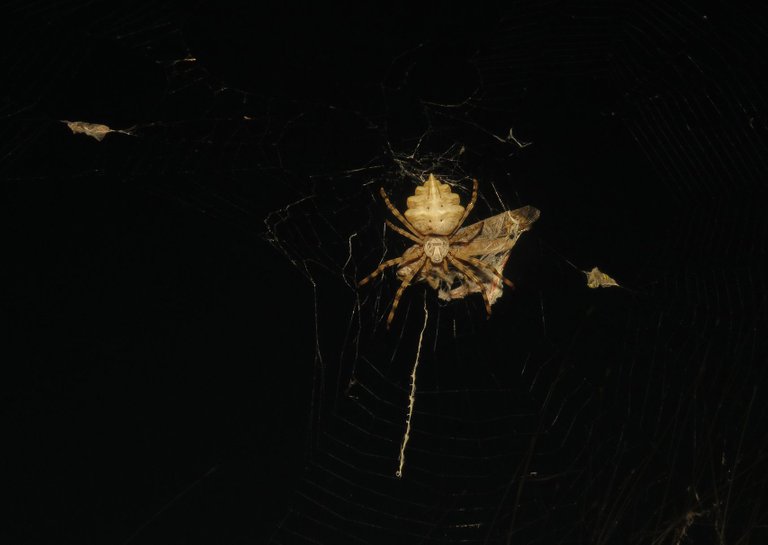
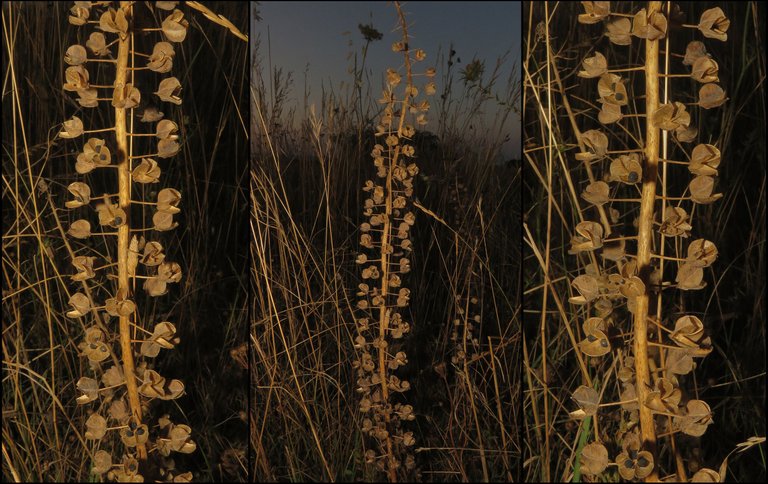
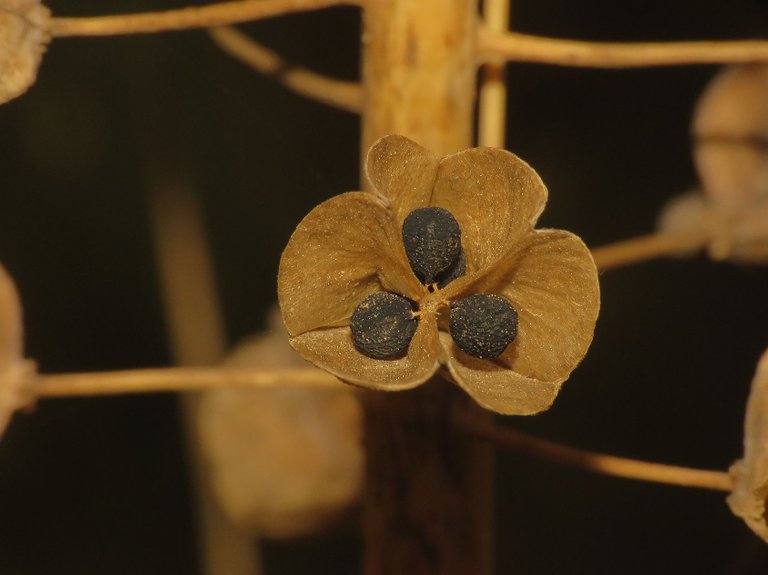
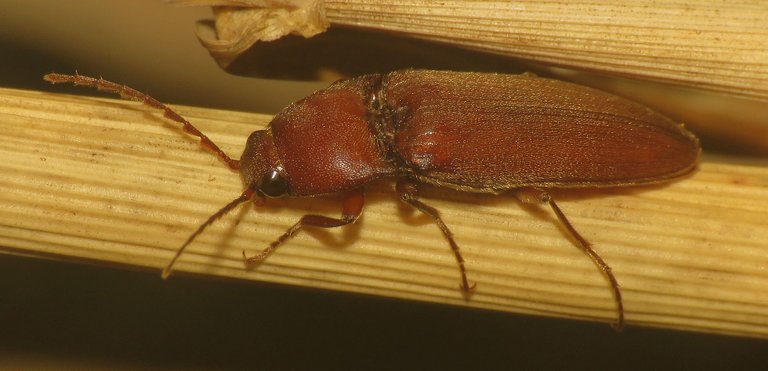
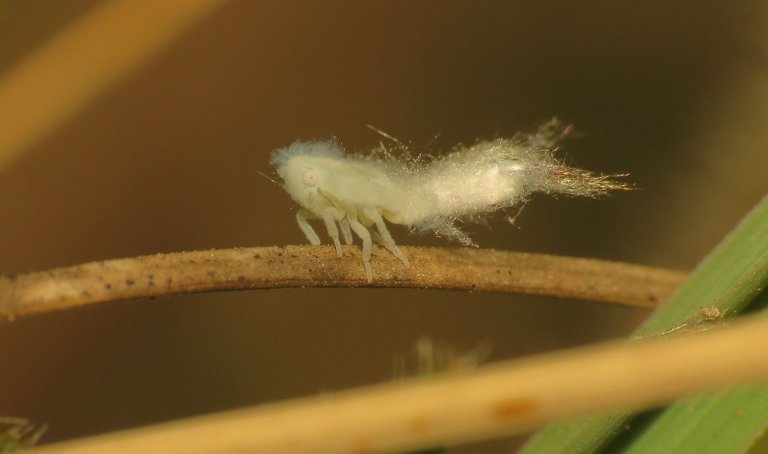
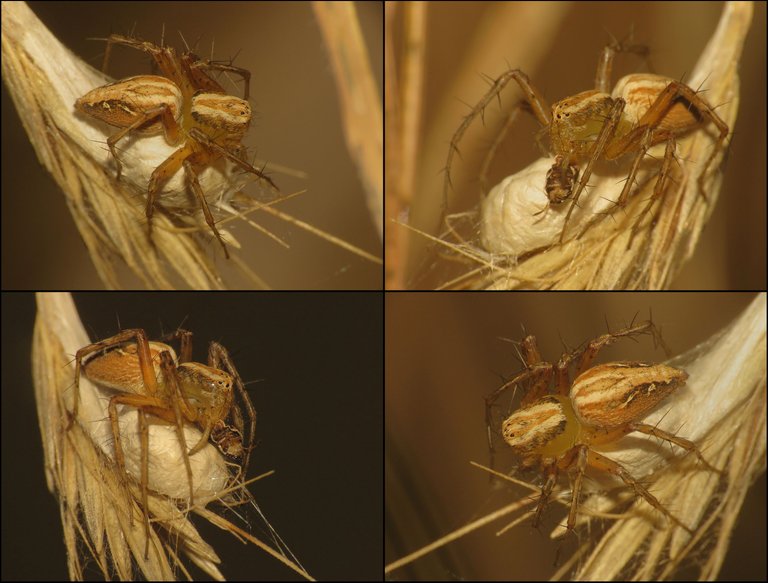
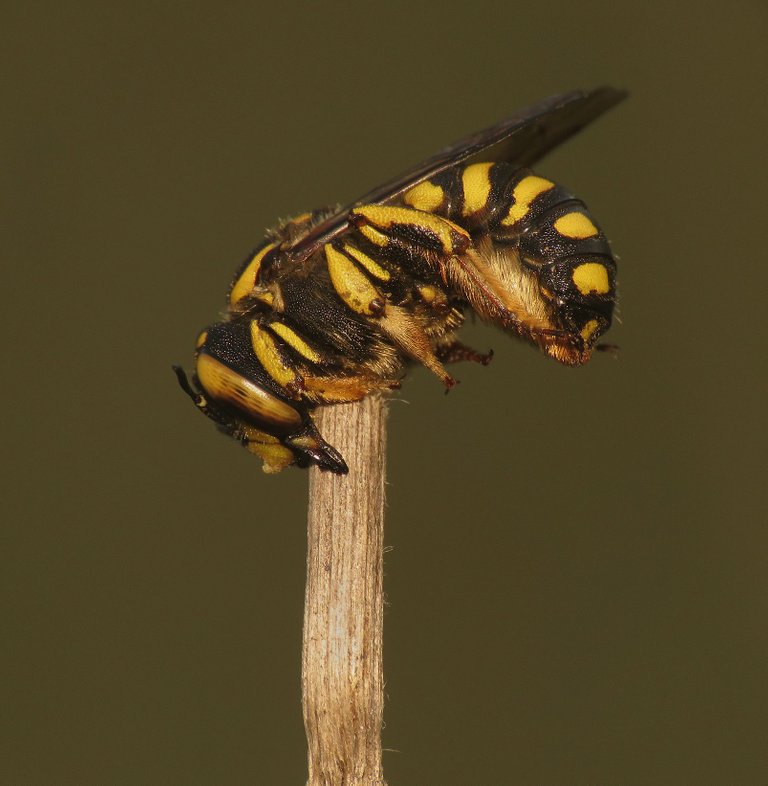
So much detailed image amazing Photography 😻
This spider is really nice. I also see different types of insects at different times while walking along the road and these are quite remarkable. I saw some awesome insects in your post that look really awesome. Thanks
@tipu curate 🌼
Upvoted 👌 (Mana: 57/77) Liquid rewards.
WOW !!! Great photography
Thanks.
the cracker spider 😉. Amazing photos
:D Eight - legged snack.
Man beautiful photos again...the detail is amazing. That first one looks like something from Alien - kind of surreal and xenomorphic
True. Very alien - like species. :) The plants and animals on Earth are so diverse, it's like visiting some intergalactic zoo.
As always, a beautiful selection of particularly impressive species.
Thank you :)
Fantastic write up. Sometime it is necessary to take our time to study some creature like this.
Thank you. :) Glad you like the post. Yes, with a bit of information, plants and animals are even more interesting.
These photos are incredible! I'm not a fan of spider but even I can appreciate them. The black seed pods in particular, with the little spots of what I assume are pollen. Wow!
Thank you. :) Glad you like this photo - report from the meadows in my area.
Hi @borjan , Imagine, the male of the spider waits to mate and possibly loses his life, the male is definitely very risky :) I find the nymph incredible, all the animals are incredible and your camera shows every detail
Happy Saturday
Glad you like this collection of creatures. :) Have a great Sunday.
ha ha ha, not that I like them very much, but you can't deny that they look very, very, very big, ha ha ha, so there's no way to ignore them ha ha ha ha.
Happy Sunday friend :)
:-)
!discovery 25
This post was shared and voted inside the discord by the curators team of discovery-it
Join our community! hive-193212
Discovery-it is also a Witness, vote for us here
Delegate to us for passive income. Check our 80% fee-back Program
I have never actually seen an ant lion, just their multiple holes everywhere here. Very cool! It's so interesting how well the various bugs blend in. Liked the last of of the bee.
I have the opposite experience with the ant lion. :D I always see the adult, flying insects, practically every day during the summer ... but I never saw the holes and larvae.
That looks like a really soft spider bed inside those wild carrot flowers.
:) Natural luxury for small animals.